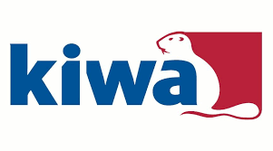Multisite certification At Scania
Interview on multisite certification with Per Webb from Scania
Read more

As a representative from the second certifier, I interviewed Raymond Kersten on the subject of multisite certification. Raymond is a senior lead auditor and manager back office at independent testing, inspection and certification organization Kiwa. Although his current activities mostly have an internal focus, Raymond used to perform many management system audits, including those for multisite certification.
Multisite certification gets more and more important because of companies merging and globalizing. According to Raymond Kersten many of Kiwa’s larger clients want Kiwa’s auditors to be able to audit multiple management system standards. Kiwa has harmonization meetings twice a year for each standard. Where applicable, multisite certification is an issue during these meetings.
Raymond and I first discussed the interview I had earlier with Steven Bremer from Tauw. For Tauw, the business units are more important than the sites. Local presence is important for customers and this is the reason Tauw wants to have these locations mentioned on the certificates. According to Raymond the consequence of having sites on the certificate is that these sites must be audited (sampling).
In Raymond’s experience, organizations with good performance in respect of multisite certification have in common that the sites - complementary to the central function of the multisite organization - have local management and quality assurance. Challenge for both Kiwa and organizations is to get a good grip on the complete multisite organization.
Sometimes it is not easy to identify all the different sites and activities/processes that are relevant for the certification. There can be sites that only function as a sales department or as a warehouse. Kiwa’s audit plan should also cover these, when relevant for the scope of certification. The relevant clauses of the management standard(s) should be addressed to such a site.
The relevant question is how to access this kind of site in the sampling, compared to the more common sites. Kiwa samples the sites based on the similarity of their processes and activities. Raymond agrees that this similarity depends on the scope of the certification. It could make a difference when the scope is rather generic or more detailed.
Kiwa has no standard agenda for the audit of the central function. This is to be customized, based on the organization. For example, on which level should the different clauses of the management standard(s) be addressed, at the central function or on the level of the sites? This can differ per organization and depends on, for example, the level of centralization and if the sites have local management next to the central top management
Typical non-conformity’s during the audits of the central functions are for example:
Next to the processes/activities at the sites that are centrally planned and controlled, a multisite organization could have processes that are centrally carried out for the sites. Examples are HR, procurement and IT. When these processes/activities are relevant for the scope of the certification, these should be included in the audit plan of the certifier.
When it comes to multisite certification, Raymond advises organizations:
See further our homepage on MD1.Support!

Interview on multisite certification with Per Webb from Scania
Read more